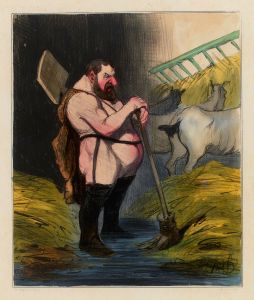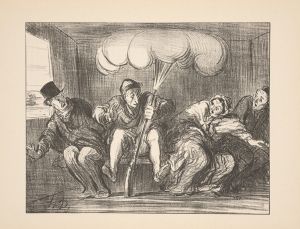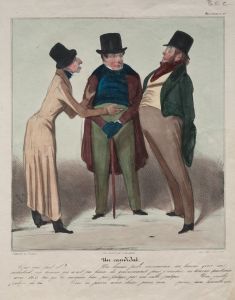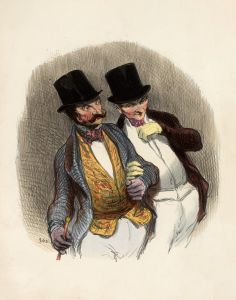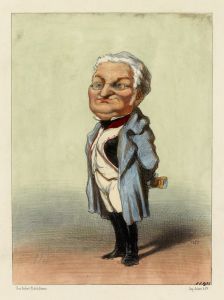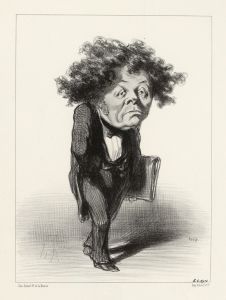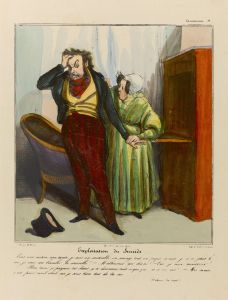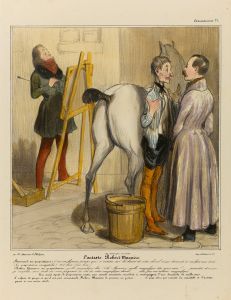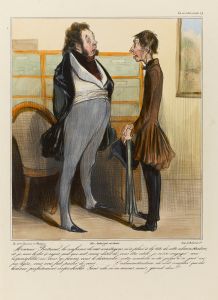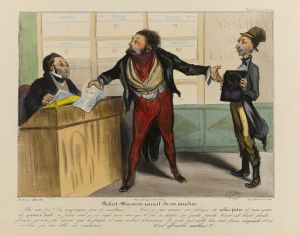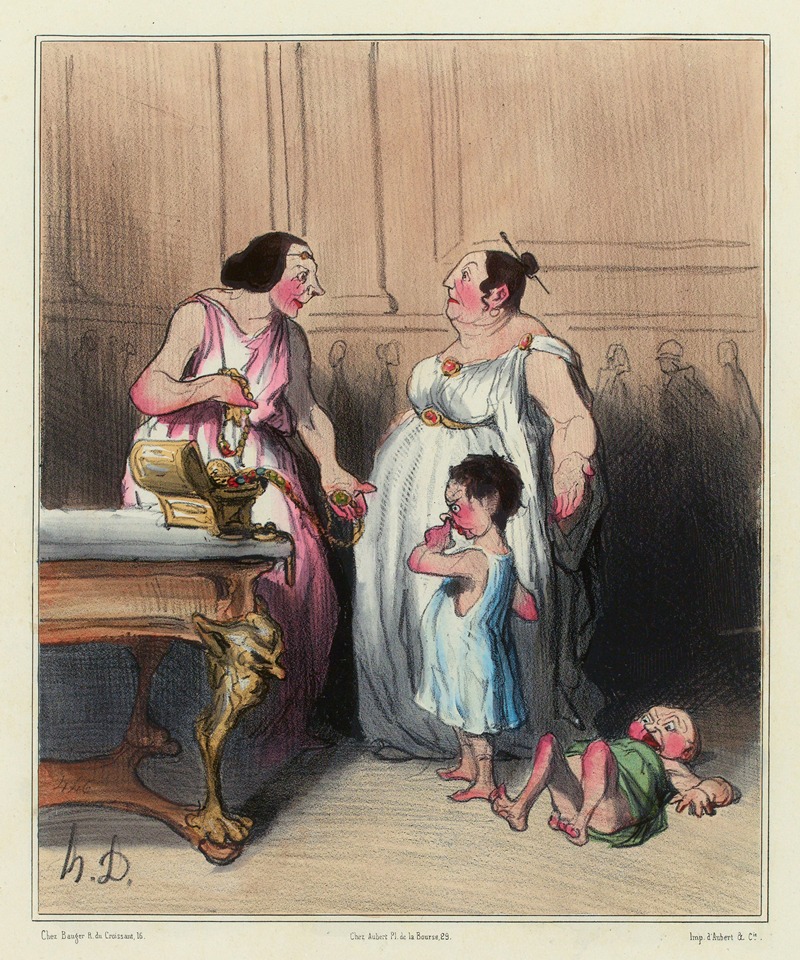
La mère des Gracques
A hand-painted replica of Honoré Daumier’s masterpiece La mère des Gracques, meticulously crafted by professional artists to capture the true essence of the original. Each piece is created with museum-quality canvas and rare mineral pigments, carefully painted by experienced artists with delicate brushstrokes and rich, layered colors to perfectly recreate the texture of the original artwork. Unlike machine-printed reproductions, this hand-painted version brings the painting to life, infused with the artist’s emotions and skill in every stroke. Whether for personal collection or home decoration, it instantly elevates the artistic atmosphere of any space.
Honoré Daumier, a prominent French artist known for his caricatures, paintings, and sculptures, created the artwork "La mère des Gracques" in the 19th century. Daumier's work often reflected his keen interest in social and political issues, and he is celebrated for his ability to capture the essence of his subjects with both humor and critical insight.
"La mère des Gracques" translates to "The Mother of the Gracchi," referring to Cornelia Africana, the mother of the Gracchi brothers, Tiberius and Gaius Gracchus. These brothers were significant figures in Roman history, known for their efforts to implement social and political reforms in the Roman Republic. Cornelia is often portrayed as a model of Roman virtue and maternal dedication, celebrated for her role in shaping her sons' ideals and ambitions.
Daumier's depiction of Cornelia and her sons is consistent with his broader artistic themes, which frequently explored the dynamics of power, class, and social justice. Although Daumier is primarily recognized for his lithographs and caricatures, he also produced a number of paintings and sculptures that reveal his depth as an artist and his engagement with historical and contemporary themes.
The painting "La mère des Gracques" is part of Daumier's exploration of historical subjects, which he approached with the same critical eye he applied to contemporary society. His work often blurred the lines between past and present, using historical allegories to comment on the social and political issues of his own time. This approach allowed Daumier to critique the status quo and advocate for reform, much like the Gracchi brothers themselves.
Daumier's artistic style is characterized by its expressive use of line and form, capturing the emotional intensity of his subjects. In "La mère des Gracques," he likely employed these techniques to convey the strength and determination of Cornelia, as well as the idealism and resolve of her sons. His ability to imbue his figures with a sense of vitality and purpose is a hallmark of his work, contributing to his reputation as a master of social commentary through art.
While specific details about the composition and current location of "La mère des Gracques" may not be widely documented, Daumier's broader body of work remains influential. His contributions to the world of art extend beyond his individual pieces, as he helped to shape the development of political and social commentary in visual art. Daumier's legacy is evident in the continued appreciation of his work, which resonates with audiences for its incisive critique and enduring relevance.
In summary, Honoré Daumier's "La mère des Gracques" reflects his interest in historical subjects and his skill in using art as a medium for social and political commentary. Through his depiction of Cornelia and her sons, Daumier engages with themes of virtue, reform, and the enduring impact of historical figures, underscoring his status as a significant figure in the world of 19th-century art.






